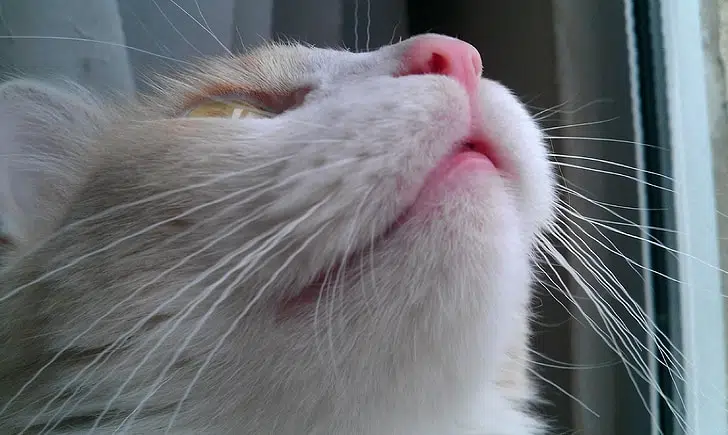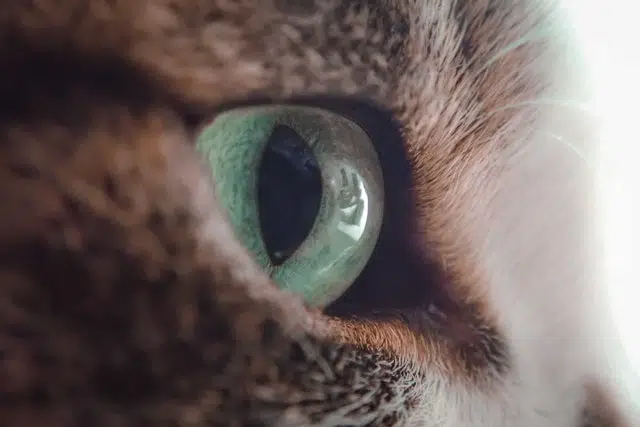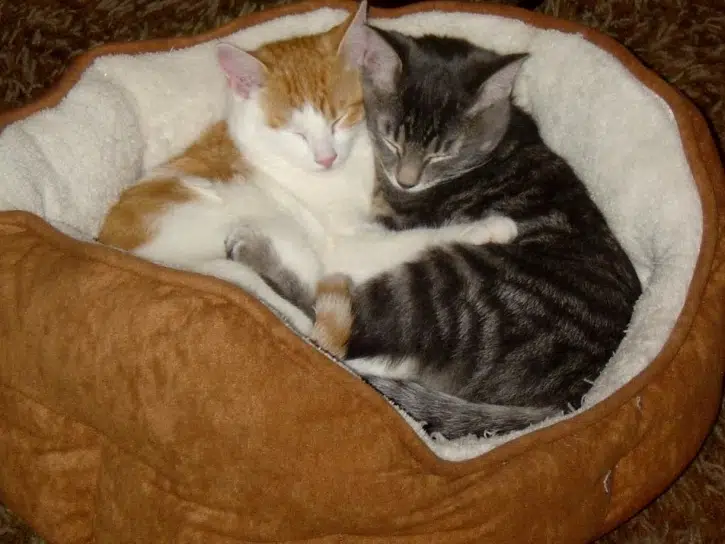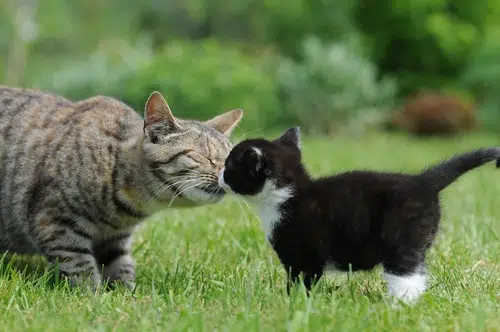Home » Blog » Pet » Pet Parenting Lifestyle » Introducing Your Kitten and Cat for the First Time
Categories
Tags
animal welfare
breed profile
buying a car
buying a pet
Car
car accessories
car care
car features
car insurance
Car safety
car sales
car service
cat
cat behaviour
cat body language
Cat Breeds
cat food
cat insurance
comprehensive car insurance
Dog
Dog Behaviour
dog body language
Dog Breeds
dog food
Dog Insurance
dog training
eco friendly cars
Kitten
New Car
pet accessories
pet activities
Pet Adoption
pet breeders
pet days of the year
pet fun stuff
Pet Health
pet insurance
pet parenting
Pet Safety
pet services
Puppy
rescue pets
road safety
road trip
safe driving
Recent Blog:
Facebook Posts
2 days ago
Growing old sometimes means we can’t take care of pets anymore. Find out some advice on what to do when this happens:![]()
![]() Senior Pet Parents – Contingency Plans for Your Pet – bit.ly/44bzwkS
... See MoreSee Less
Senior Pet Parents – Contingency Plans for Your Pet – bit.ly/44bzwkS
... See MoreSee Less
Senior Pet Parents' Contingency Plans for Pets
www.pd.com.au
Sometimes senior pet parents need more downtime. For older pet owners, this can be tricky to navigate if their dog or cat is full of beans and wants to4 days ago
Before you rev up the engine, let’s run through a checklist of things to do before starting your car. Not only do these steps ensure your safety (and that of others around you), but they also help in maintaining your vehicle's longevity.![]()
![]() Driving Tips: Your Checklist Before Starting Your Car -
... See MoreSee Less
Driving Tips: Your Checklist Before Starting Your Car -
... See MoreSee Less
Driving Tips: Your Checklist Before Starting Your Car
www.pd.com.au
Heading out for a drive? Hold up a second! Whether you're dashing off to work, running errands, or embarking on a road trip adventure, there are a few1 week ago
Are intestinal worms setting up camp in your dog’s gut without paying rent? Here’s how to spot the main culprits and get rid of them too:![]()
![]() Preventing, Identifying and Treating Intestinal Worms in Dogs - bit.ly/43YjCKu
... See MoreSee Less
Preventing, Identifying and Treating Intestinal Worms in Dogs - bit.ly/43YjCKu
... See MoreSee Less
Preventing, Identifying and Treating Intestinal Worms in Dogs
www.pd.com.au
Intestinal worms, such as roundworms in dogs are one of the least glamorous topics on the planet. These intestinal parasites that basically use our dogsKitten and cat first time introductions are crucial to get right. In other words, they form the bedrock of a feline love story (friendship or romance) or of a lifelong rivalry.
And for a cat lifelong is anything from 10-15 years. That’s a potential 15 years with two cute felines turned rival gangsters living under one (your) roof.
Another way to put this is, don’t bother with short cuts when it comes to integrating your kitten into your already-furry household.
If you already have a cat and are planning to incorporate a new kitten into its kingdom you need a plan. Look no further, here’s your kitten and cat introduction plan 101.
Kitten and cat introduction – no contact
Cats are territorial, which is why it’s important to keep them in separate rooms (or dens) at first. You want to create a soft landing for your new kitten without threatening your other cat’s sense of security.
Do this by giving your new kitten their own fresh things to imprint their smell on. This can include blankets, toys and most definitely new feeding bowls and their own litter box. This way they’ll have a safe zone they can mark with their scent.
Move your cats around the house as you settle in your newbie, always maintaining them in separate rooms. This way your new kitty can smell your other cat and vice versa. They just can’t see or touch each other, which prevents confrontation.
What you’re doing is introducing your cats via their strongest sense – their smell. This is because a cat’s sense of smell is 9-16 stronger than ours!

Smell contact (close-up)
Next step is all about food. Food is a basic necessity, which is why it’s a cornerstone to kitty cat introductions. Introducing your cats to each other’s scent around food will create positive reinforcement for both. Do this by feeding them on each side of a closed door.
Start off with some distance between the door and each feline’s food. Follow your instinct with on this; you may start with a meter away on either side. Gradually bring the bowls closer and closer to the door with each feeding time.
Eating time is a positive experience for cats, much like it is for people. When you take time out to eat with friends, colleagues, or family, it’s significant because it’s a time to bond. Same goes for cats.
Without ever having seen each other, your kitten and cat are already getting to know one another. Moreover, they’re doing it with food. As a result, they’re already overcoming their sense of territorial rivalry over this precious resource, AKA pet food.
Find out what to feed your new kitten and more in 5 things new kitten parents need to know.
Visual contact
Now that you’ve reached the border in this eating regime, i.e., the closed door, it’s time for visual contact. You can do this with a make-shift fence (some people use a roll-out wire fence), netting, or a screen door.
You might feel that a screen door is a major investment. Just remember having your cats get along is a lifetime investment, so find a solution that suits your DIY skills and/or your budget.
Since we’re only creating a temporary barrier and only in one doorway, you may even be able to create a barrier using netting.
Whatever you choose the pared-down barrier must still be able to keep them apart, while providing full visual contact.
This step is important because your cats already know each other by scent, but this is their chance to visually imprint. Know that it will probably result in some staring contests that would make even El Mariachi look away. Don’t despair. Yes, they’re sizing each other up, but as long as they can only look it’s fine.

Houston, we have contact
After all your hard efforts, you’re now at the last stage – removing the barrier. You’ve lovingly gone through the first three stages of no contact, smell contact, and visual contact. This will have laid the groundwork for letting your cats have actual physical contact.
Don’t try to bring them closer, just observe them as you would a nature documentary. However, unlike a nature documentary, you can and must intervene if either cat moves to create a debacle. If this happens, here are three ways you can safely break up a cat fight.
If you feel like the vibes aren’t good, (i.e.: they’re doing the staring contest El Mariachi thing) keep contact short. It’s better to repeat the exercise as many times as you (or your cats) need to than getting impatient and upending all your hard work.
Although your feline besties may circle each other and may even seem standoffish, this is normal. Having already met through their primary senses, they’re just doing their due diligence.
Once they make contact they may play. They may sniff each other, then turn a blind eye staring off into the middle distance – this is good. Or they might just start cleaning themselves – also good.
The important thing is that you’ve given your kitties a lifelong friend. And you laid the groundwork to make it a good friendship.
Purrrrr!
If you’re still deciding on a new kitten, read all about the friendliest cat breeds to welcome home.

Kitten and cat senses
Remember to microchip and vaccinate your new kitten to protect them against all the pests and hazards out there. Also remember that these vet visits are only the tip of the iceberg when it comes to medical costs that happen over time.
Our cat insurance plans cover tests and treatments for illnesses, accidents, allergies and more as well as non-routine vet visits.
And because you already have a cat, you might just get our multiple pet discount. Meow!
Share On:




